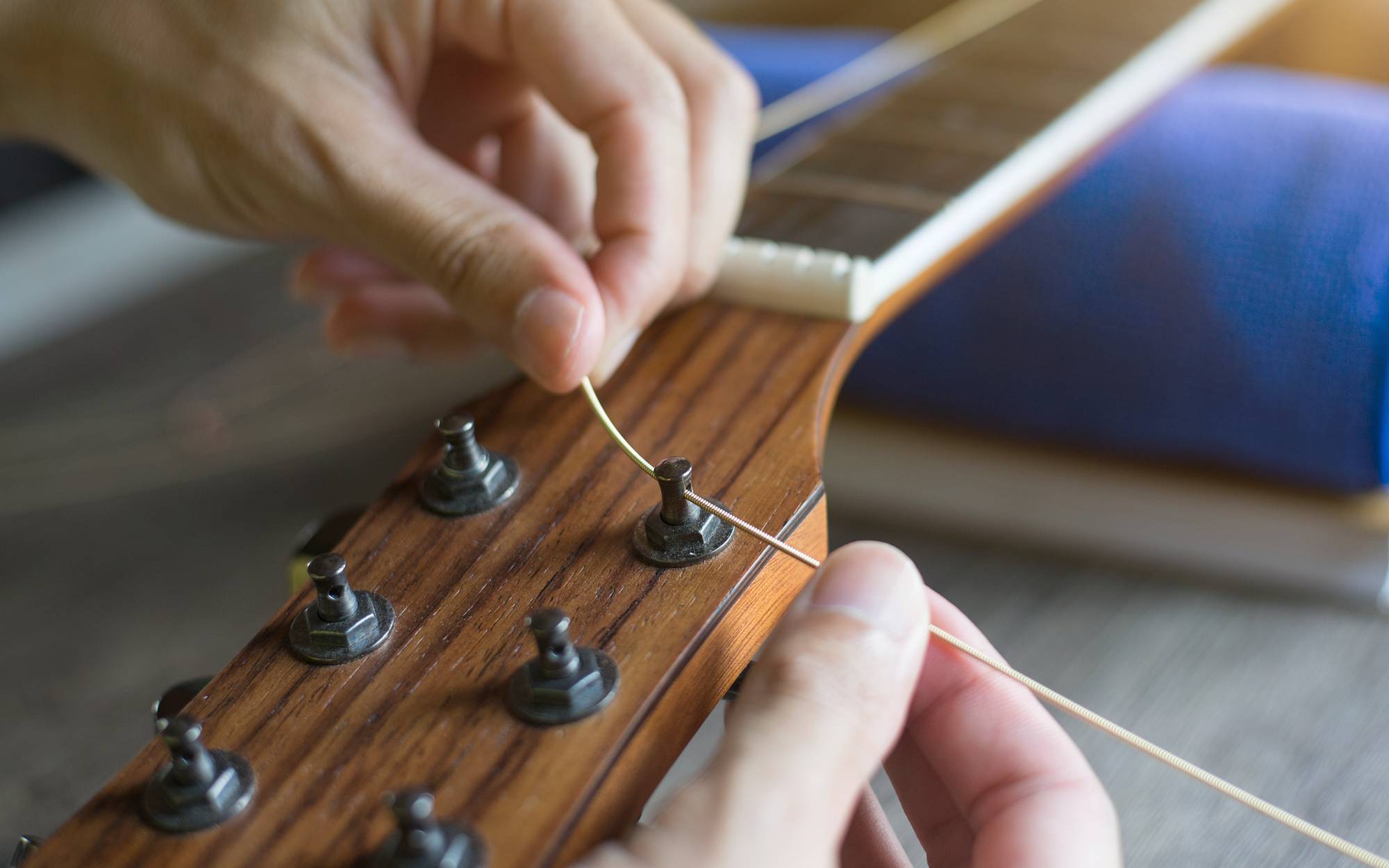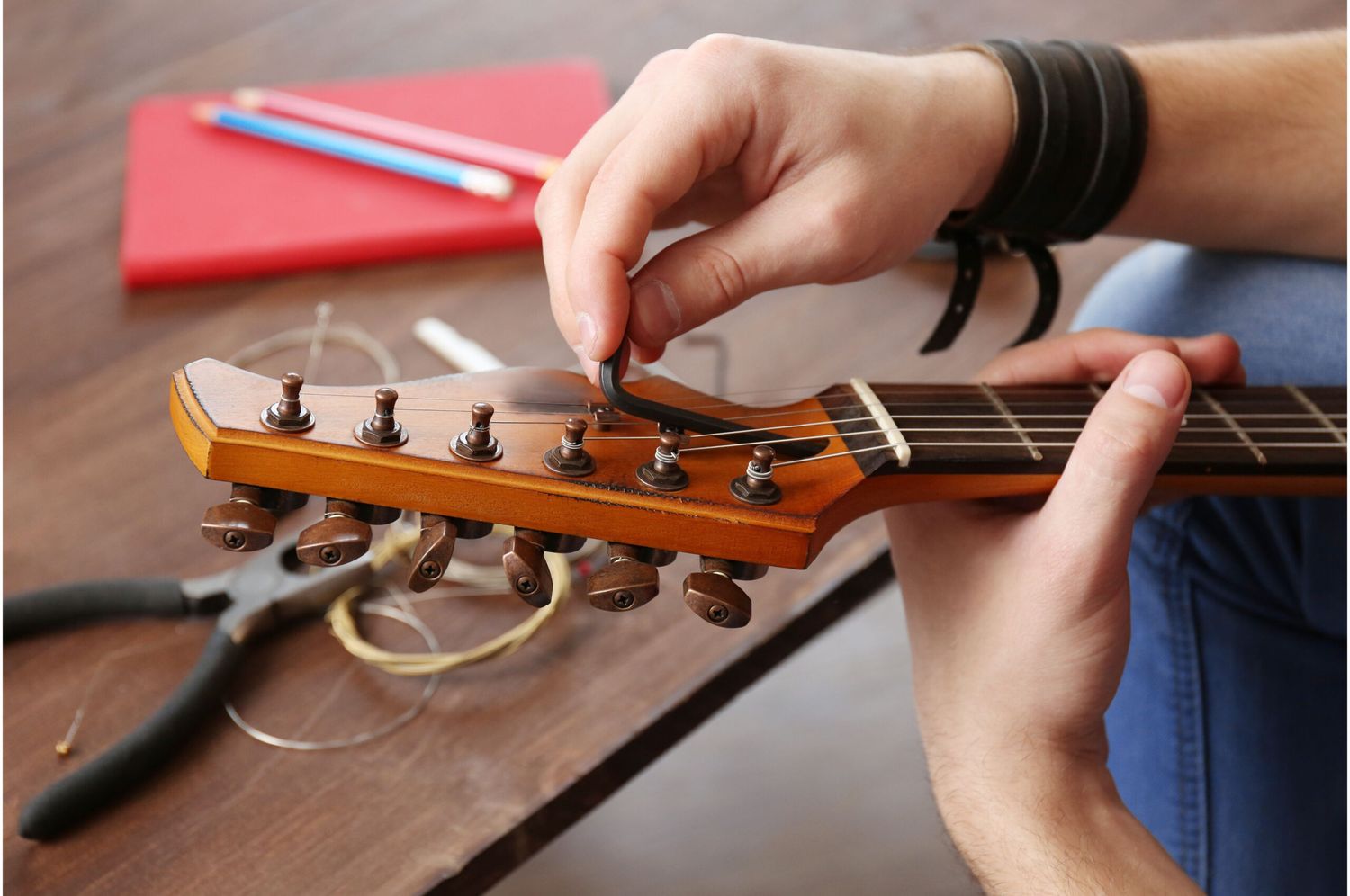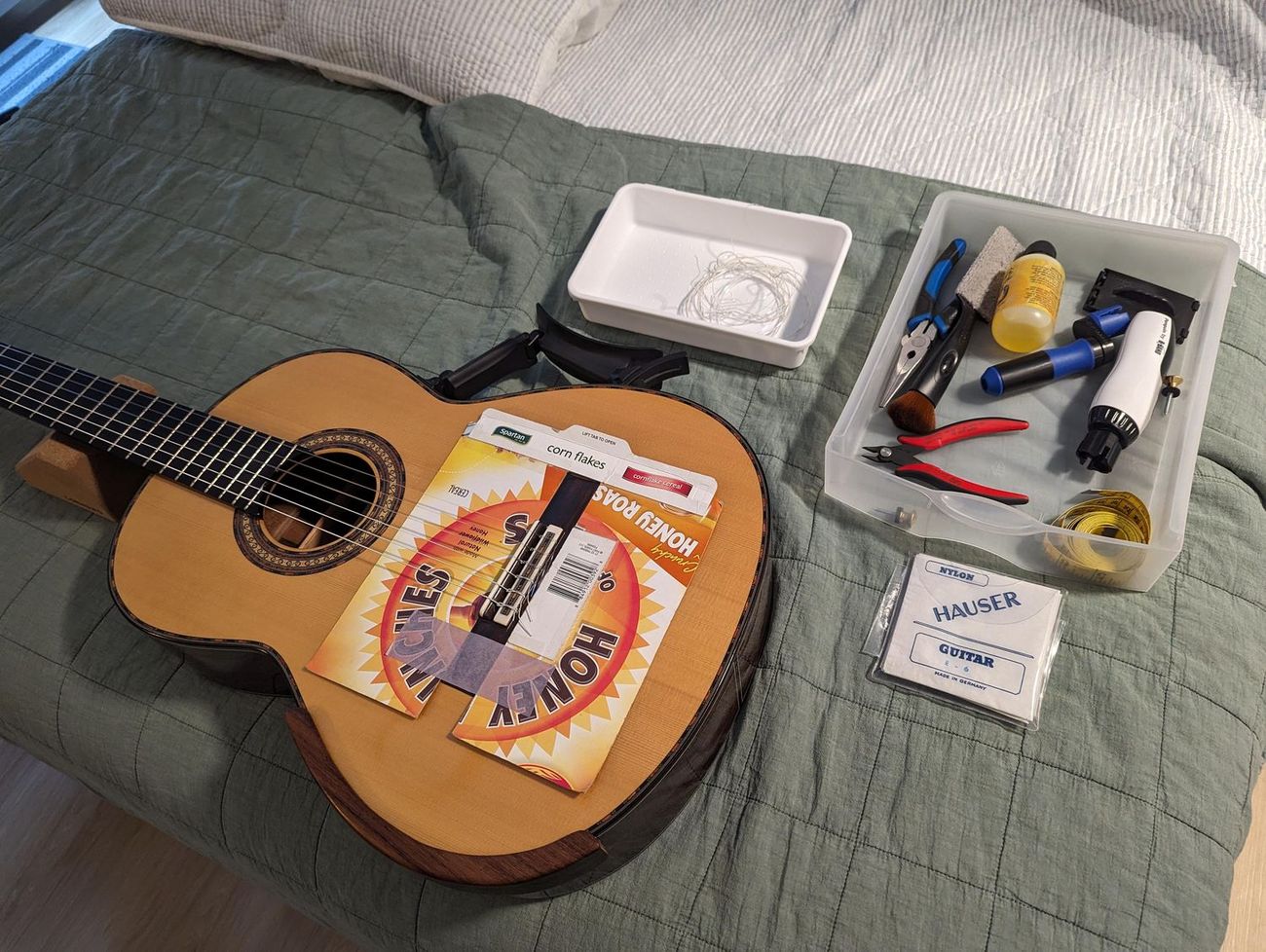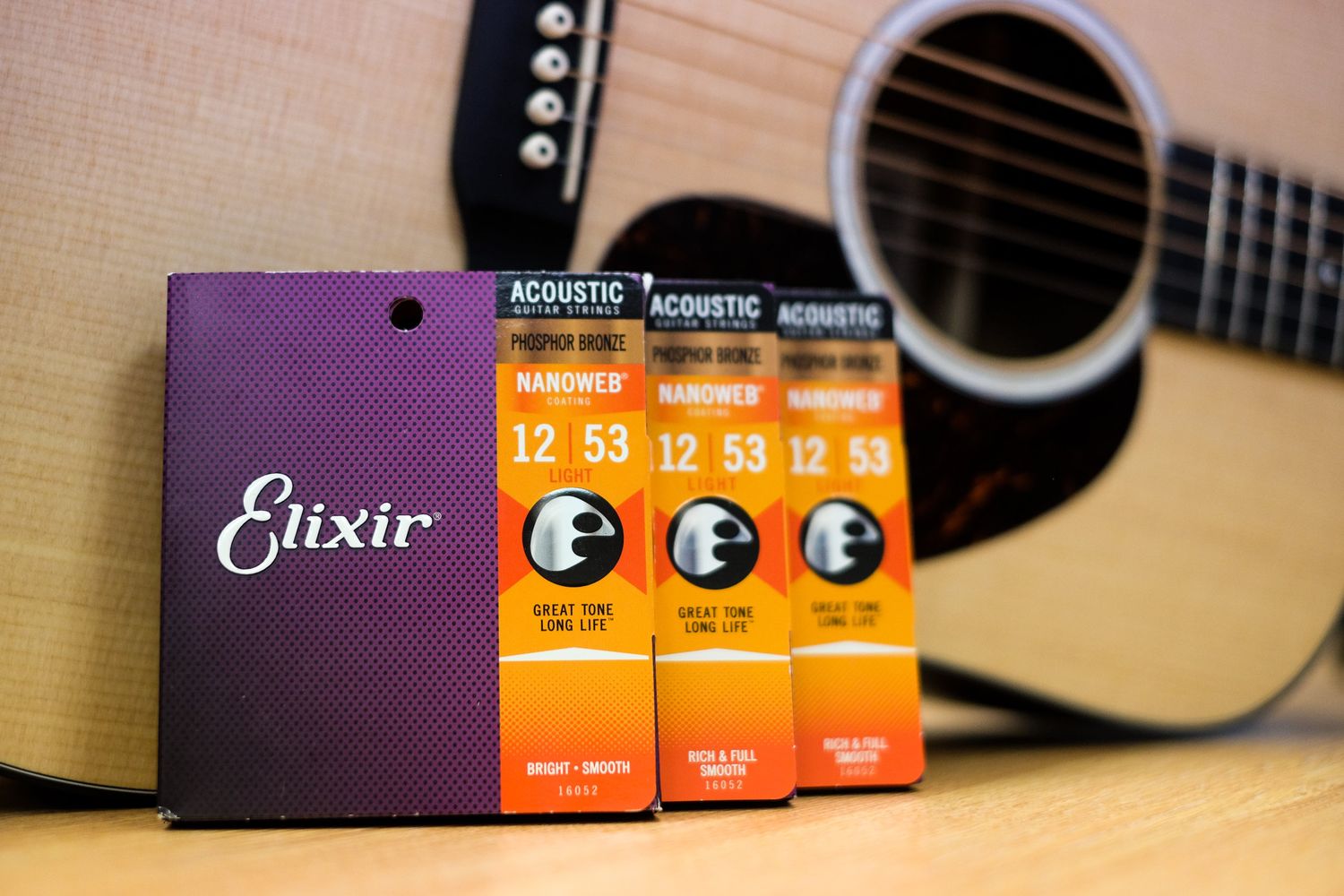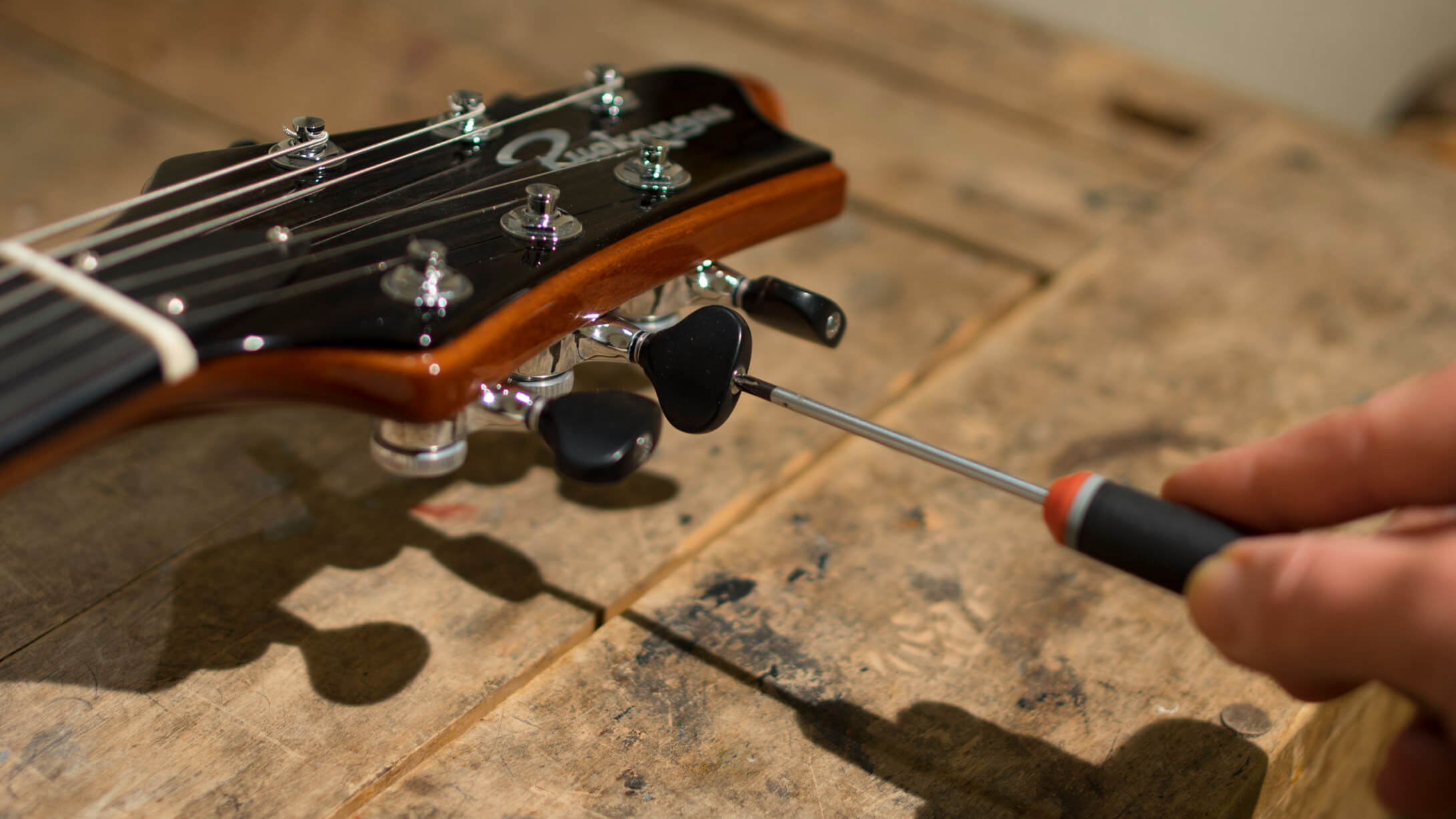Home>Production & Technology>Acoustic>How To Tune A 6-String Acoustic Guitar
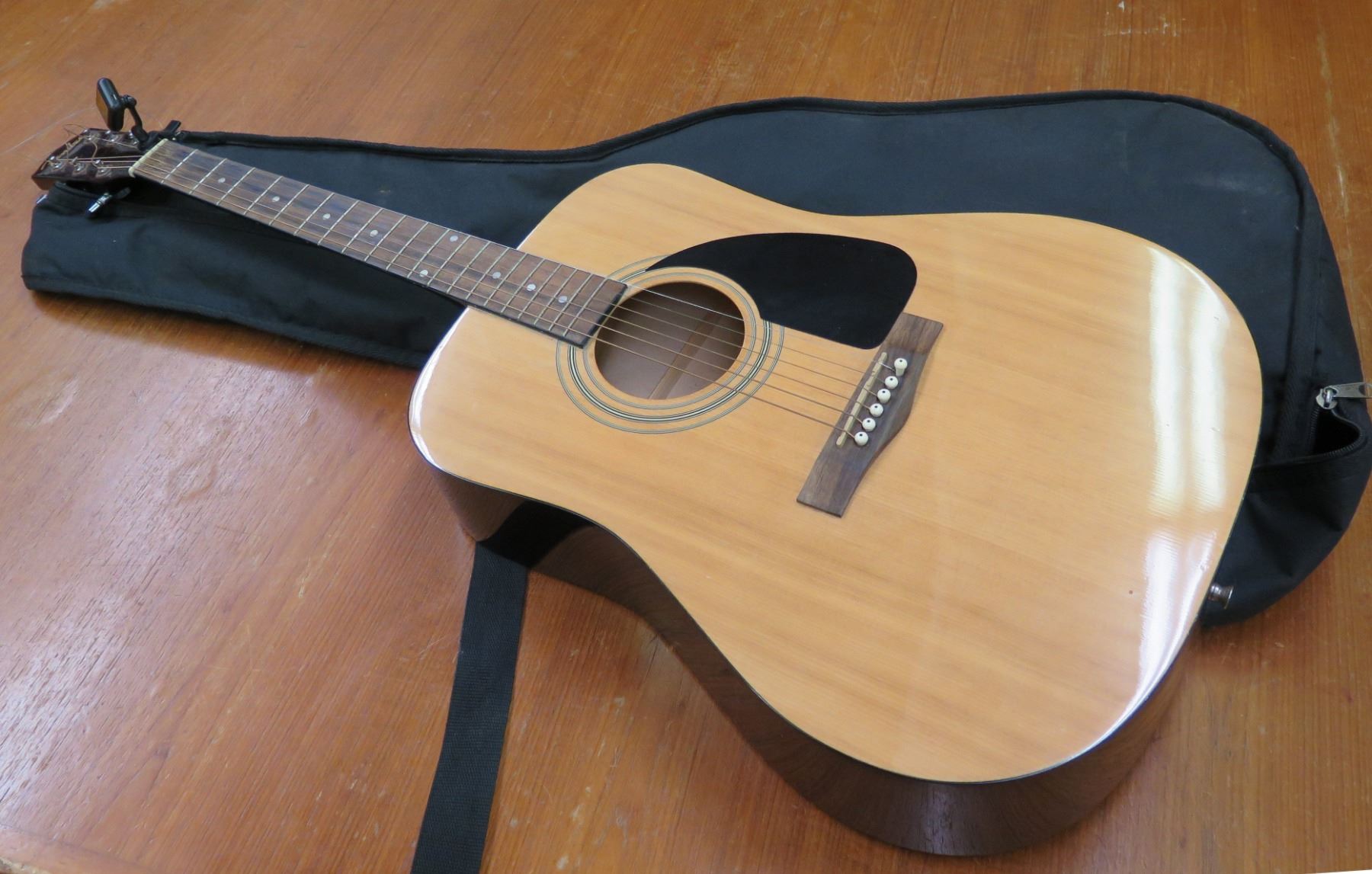

Acoustic
How To Tune A 6-String Acoustic Guitar
Published: March 11, 2024
Learn how to tune your acoustic guitar with our step-by-step guide. Keep your instrument sounding its best with our expert tips and techniques.
(Many of the links in this article redirect to a specific reviewed product. Your purchase of these products through affiliate links helps to generate commission for AudioLover.com, at no extra cost. Learn more)
Table of Contents
Introduction
Tuning a 6-string acoustic guitar is an essential skill for any guitarist, whether you're a beginner or a seasoned musician. A well-tuned guitar not only produces beautiful, harmonious sounds but also enhances the overall playing experience. Understanding the nuances of tuning and maintaining your guitar's optimal pitch is crucial for achieving the best possible sound quality.
In this comprehensive guide, we will delve into the step-by-step process of tuning a 6-string acoustic guitar. From changing the strings to using a tuner and fine-tuning the instrument by ear, we will cover all the essential techniques to ensure that your guitar produces the perfect pitch. Whether you're preparing for a performance, a recording session, or simply practicing at home, mastering the art of tuning your acoustic guitar will significantly elevate your musical journey.
As we embark on this tuning adventure, it's important to note that a well-tuned guitar not only sounds better but also feels better to play. The right pitch and intonation can make a world of difference in the way your guitar responds to your touch, allowing you to express yourself more effectively through your music. Additionally, a properly tuned guitar ensures that you can play in harmony with other musicians and recordings, creating a cohesive and melodious ensemble.
So, grab your acoustic guitar, and let's dive into the intricacies of tuning. Whether you're a beginner seeking to master the basics or an experienced player looking to refine your skills, this guide will equip you with the knowledge and techniques to tune your 6-string acoustic guitar like a pro. Let's embark on this musical journey and unlock the full potential of your instrument!
Step 1: Changing the Strings
Changing the strings of your 6-string acoustic guitar is a fundamental aspect of maintaining its optimal sound quality and playability. Over time, strings can become worn, lose their tone, and even break, necessitating regular replacement. Additionally, changing the strings presents an opportunity to customize the sound and feel of your guitar by selecting strings that best suit your playing style and musical preferences.
To begin the process of changing the strings, gather the necessary tools, including a set of new strings, a string winder, and a pair of wire cutters. Start by removing the old strings one at a time to prevent excessive tension on the guitar neck. Loosen the tuning peg corresponding to the string you are replacing, unwind the string from the peg, and carefully remove it from the bridge. Next, uncoil the new string from its packaging and insert one end into the bridge, ensuring it is securely in place.
Moving to the headstock, guide the opposite end of the string through the corresponding tuning peg, leaving a few inches of slack to allow for winding. Using the string winder, begin winding the string onto the tuning peg in the direction that tightens the string when turned. As you wind the string, ensure that it wraps neatly and evenly around the peg to prevent slippage and maintain tuning stability.
Once the string is securely attached to the tuning peg, use the wire cutters to trim any excess length, leaving a small amount of slack to accommodate tension adjustments. Repeat this process for each string, ensuring that they are installed with the correct gauge and in the proper order. After all the new strings are in place, tune them to a standard pitch using a tuner or by referencing a reliable tuning source.
Changing the strings of your 6-string acoustic guitar is a valuable skill that contributes to the overall maintenance and performance of your instrument. By regularly replacing old strings with fresh ones and ensuring proper installation, you can optimize the sound, playability, and longevity of your guitar, setting the stage for an exceptional playing experience.
Step 2: Using a Tuner
Using a tuner is a crucial step in achieving precise and accurate tuning for your 6-string acoustic guitar. While tuning by ear can be a valuable skill, especially for experienced musicians, a tuner provides a reliable and efficient method for ensuring that each string is perfectly pitched. Whether you're a beginner or a seasoned player, a tuner serves as an indispensable tool for achieving optimal sound quality and maintaining consistent pitch across all strings.
There are various types of tuners available, including clip-on tuners, pedal tuners, and smartphone apps. Clip-on tuners attach directly to the headstock of the guitar, allowing for convenient and hands-free tuning. Pedal tuners are popular among performing musicians, as they can be integrated into pedalboards for seamless on-stage tuning. Smartphone apps offer a portable and versatile tuning solution, utilizing the device's microphone to detect and display the pitch of each string.
To use a tuner effectively, start by activating the device and selecting the appropriate tuning mode, typically based on standard tuning (EADGBE) for a 6-string acoustic guitar. Pluck each string individually and observe the tuner's display, which indicates whether the pitch is too high, too low, or in tune. As you adjust the tuning pegs, the tuner provides real-time feedback, guiding you toward the precise pitch for each string.
When tuning, it's essential to approach the process methodically, starting with the low E string and progressing to the high E string. Ensure that each string is tuned to the correct pitch, as indicated by the tuner's display or visual indicators. As you fine-tune each string, listen for the clarity and resonance of the notes, confirming that the guitar is reaching its optimal tuning.
Using a tuner not only streamlines the tuning process but also cultivates a heightened sense of pitch awareness and ear training. By consistently using a tuner, you can develop a more discerning ear for pitch and intonation, enhancing your overall musical proficiency and performance capabilities. Additionally, a well-tuned guitar facilitates seamless chord transitions, harmonious melodies, and a more enjoyable playing experience.
Incorporating a tuner into your regular practice routine and performance preparations empowers you to maintain the integrity of your guitar's tuning, ensuring that it consistently delivers the rich, resonant tones that define the acoustic guitar's allure. With the aid of a tuner, you can confidently embark on your musical endeavors, knowing that your 6-string acoustic guitar is finely tuned and ready to unleash its full sonic potential.
Step 3: Tuning the Guitar by Ear
Tuning a guitar by ear is a skill that transcends the realm of mere mechanics; it embodies a deep connection between the musician and their instrument. While using a tuner provides precision and efficiency, tuning by ear fosters a profound understanding of pitch, intonation, and the subtle nuances of sound. This method allows the guitarist to develop a keen ear and a heightened sense of musicality, resulting in a more intimate and intuitive relationship with the instrument.
To begin tuning your 6-string acoustic guitar by ear, it's essential to establish a reference pitch. This can be achieved by using a piano, another tuned instrument, or a reliable tuning source, such as a reference pitch from a digital tuner. Once you have a clear reference pitch, you can proceed to tune each string of the guitar to match the desired standard tuning (EADGBE).
Starting with the low E string, pluck the string and listen attentively to the pitch. Compare it to the reference pitch and adjust the tuning peg accordingly to raise or lower the string's tension. As you turn the tuning peg, pay close attention to the changes in pitch and the interaction between the strings. This process requires patience and a discerning ear, as you strive to align each string with the reference pitch.
Moving on to the A, D, G, B, and high E strings, repeat the process for each string, carefully listening for the subtle variations in pitch and ensuring that they harmonize with the reference pitch. Tuning by ear encourages a deep engagement with the instrument, allowing the guitarist to appreciate the unique tonal characteristics of each string and the interplay of harmonies as the guitar reaches its optimal tuning.
Tuning a guitar by ear is not merely a mechanical task but a sensory experience that hones the musician's ability to perceive and manipulate sound. It fosters a profound connection between the guitarist and their instrument, nurturing a heightened sensitivity to pitch and intonation. This method of tuning encourages a deeper understanding of music theory and ear training, empowering the guitarist to develop a more intuitive and expressive approach to playing.
By mastering the art of tuning a 6-string acoustic guitar by ear, musicians can cultivate a profound connection with their instrument, elevating their musical journey to new heights of artistry and expression. This method not only enhances the guitarist's technical skills but also nurtures a deeper appreciation for the rich, resonant tones that define the acoustic guitar's timeless allure.
Step 4: Checking the Intonation
Checking the intonation of a 6-string acoustic guitar is a critical step in ensuring that the instrument produces accurate and harmonious tones across the fretboard. Intonation refers to the guitar's ability to play in tune at various positions along the neck, allowing chords and individual notes to resonate with clarity and precision. A well-adjusted intonation guarantees that the guitar maintains consistent pitch and tonal accuracy, enhancing the overall playability and sound quality.
To begin checking the intonation, it's essential to understand the relationship between the guitar's open strings and their corresponding fretted notes. Start by tuning the guitar to standard pitch using a reliable tuner or tuning reference. Once the open strings are in tune, proceed to assess the intonation of each string by comparing the pitch of the fretted notes at the 12th fret with their respective open string pitches.
Using a digital tuner, pluck the open string and observe the tuner's display to ensure that the pitch is accurate. Then, fret the same string at the 12th fret and pluck it again, noting the tuner's reading for the fretted note. Ideally, the pitch of the fretted note should precisely match the open string pitch when the intonation is correctly set. If the fretted note deviates from the open string pitch, adjustments to the intonation are necessary.
To adjust the intonation, locate the saddle for each string on the bridge of the guitar. Most acoustic guitars feature adjustable saddles that can be moved forward or backward to fine-tune the intonation. Using a small screwdriver or an appropriate tool, make incremental adjustments to the saddle position, aiming to align the fretted note pitch with the open string pitch.
After making adjustments, retune the string to standard pitch and repeat the process of comparing the open string pitch with the fretted note at the 12th fret. Continue fine-tuning the saddle position until the fretted note accurately matches the open string pitch, indicating that the intonation is properly set for that string.
Checking the intonation of each string ensures that the guitar delivers consistent and accurate tones across the entire fretboard, allowing for seamless transitions between chords and melodies. A well-adjusted intonation not only enhances the guitar's playability but also contributes to the overall musicality and expressiveness of the instrument.
By meticulously checking and adjusting the intonation of a 6-string acoustic guitar, musicians can optimize the instrument's tonal precision and responsiveness, unlocking its full potential for captivating performances and enriching musical experiences.
Conclusion
In conclusion, mastering the art of tuning a 6-string acoustic guitar is a multifaceted journey that encompasses technical proficiency, sensory awareness, and a deep connection with the instrument. Throughout this comprehensive guide, we have explored the essential steps of changing the strings, using a tuner, tuning the guitar by ear, and checking the intonation, each contributing to the holistic process of achieving optimal pitch and tonal precision.
Tuning a guitar is not merely a mechanical task but a transformative experience that empowers musicians to cultivate a profound understanding of sound, pitch, and musical expression. Whether utilizing the precision of a tuner or honing the skill of tuning by ear, each method offers unique insights into the nuances of pitch and intonation, fostering a heightened sense of musicality and ear training.
By embracing the process of changing the strings, guitarists can maintain the instrument's playability and tonal richness, ensuring that it consistently delivers the desired sound quality. The act of installing fresh strings not only rejuvenates the guitar's sonic character but also presents an opportunity for personalization, allowing musicians to tailor the instrument's tonal characteristics to their artistic preferences.
Integrating a tuner into the tuning process provides a reliable and efficient means of achieving precise pitch, fostering a disciplined approach to maintaining the guitar's optimal tuning. The use of a tuner not only streamlines the tuning process but also cultivates a heightened sense of pitch awareness, empowering musicians to develop a discerning ear for tonal nuances and harmonic relationships.
Tuning a guitar by ear transcends the realm of mechanics, inviting musicians to engage in a sensory exploration of sound and pitch. This method fosters a profound connection between the guitarist and their instrument, nurturing a heightened sensitivity to tonal subtleties and musical expression. By mastering the art of tuning by ear, musicians can develop a more intuitive and expressive approach to playing, elevating their musical proficiency and artistry.
Checking the intonation of the guitar ensures that the instrument delivers consistent and accurate tones across the fretboard, enhancing its playability and musical versatility. By meticulously assessing and adjusting the intonation, musicians can optimize the guitar's tonal precision, unlocking its full potential for captivating performances and enriching musical experiences.
In essence, the process of tuning a 6-string acoustic guitar is a transformative journey that goes beyond achieving the right pitch; it is a profound exploration of musicality, craftsmanship, and personal expression. By mastering the techniques outlined in this guide, musicians can embark on a musical odyssey that celebrates the rich, resonant tones and timeless allure of the acoustic guitar, unlocking its full sonic potential and embracing the art of tuning as an integral part of their musical identity.

